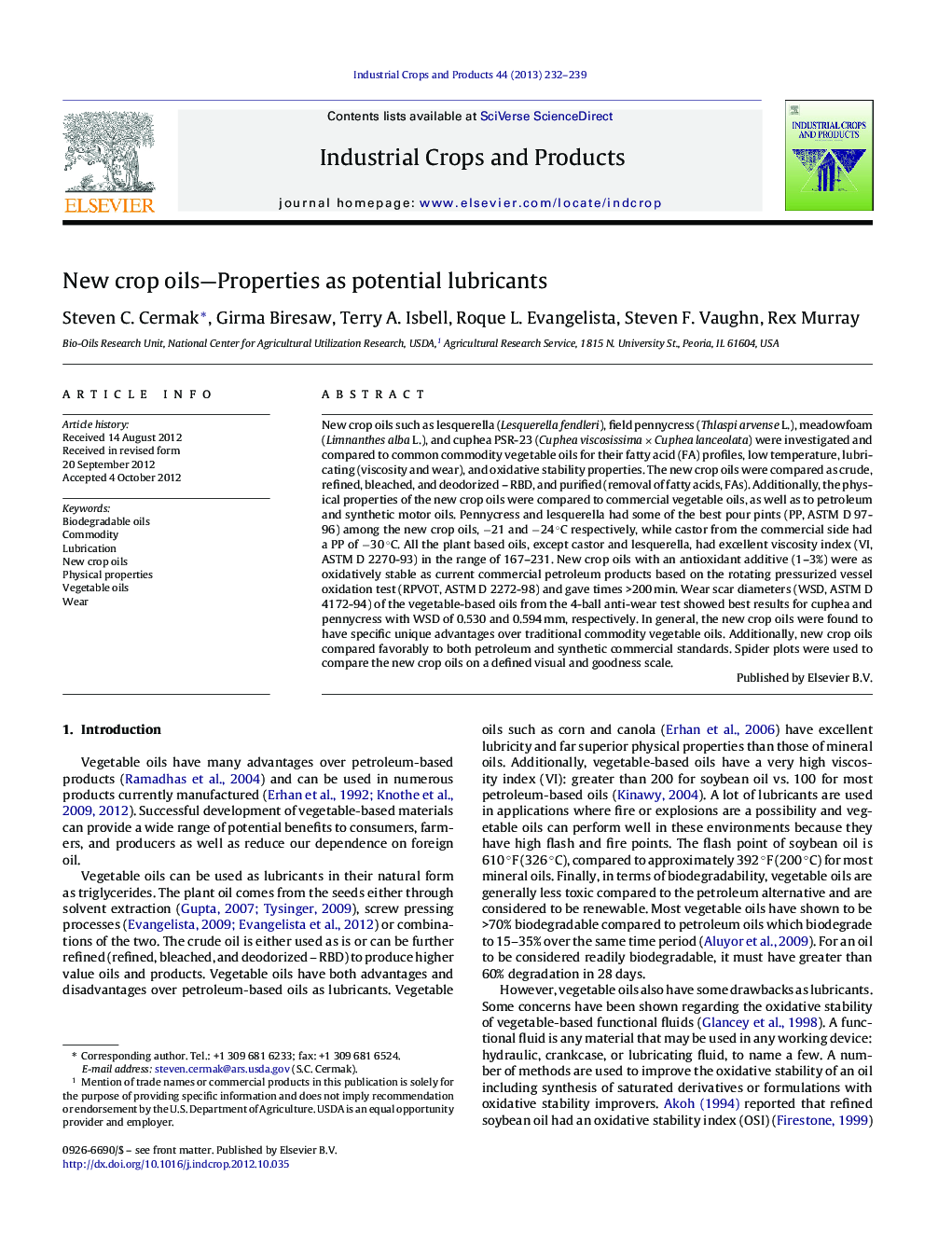| Article ID | Journal | Published Year | Pages | File Type |
|---|---|---|---|---|
| 4513636 | Industrial Crops and Products | 2013 | 8 Pages |
New crop oils such as lesquerella (Lesquerella fendleri), field pennycress (Thlaspi arvense L.), meadowfoam (Limnanthes alba L.), and cuphea PSR-23 (Cuphea viscosissima × Cuphea lanceolata) were investigated and compared to common commodity vegetable oils for their fatty acid (FA) profiles, low temperature, lubricating (viscosity and wear), and oxidative stability properties. The new crop oils were compared as crude, refined, bleached, and deodorized – RBD, and purified (removal of fatty acids, FAs). Additionally, the physical properties of the new crop oils were compared to commercial vegetable oils, as well as to petroleum and synthetic motor oils. Pennycress and lesquerella had some of the best pour pints (PP, ASTM D 97-96) among the new crop oils, −21 and −24 °C respectively, while castor from the commercial side had a PP of −30 °C. All the plant based oils, except castor and lesquerella, had excellent viscosity index (VI, ASTM D 2270-93) in the range of 167–231. New crop oils with an antioxidant additive (1–3%) were as oxidatively stable as current commercial petroleum products based on the rotating pressurized vessel oxidation test (RPVOT, ASTM D 2272-98) and gave times >200 min. Wear scar diameters (WSD, ASTM D 4172-94) of the vegetable-based oils from the 4-ball anti-wear test showed best results for cuphea and pennycress with WSD of 0.530 and 0.594 mm, respectively. In general, the new crop oils were found to have specific unique advantages over traditional commodity vegetable oils. Additionally, new crop oils compared favorably to both petroleum and synthetic commercial standards. Spider plots were used to compare the new crop oils on a defined visual and goodness scale.
► New crops were compared to common commodity vegetable oils for their fatty acid (FA) profiles, low temperature, lubricating, and oxidative stability properties. ► Additionally, new crop oils compared favorably to both petroleum and synthetic commercial standards. ► Spider plots were used to compare the new crop oils on a defined visual and goodness scale.
